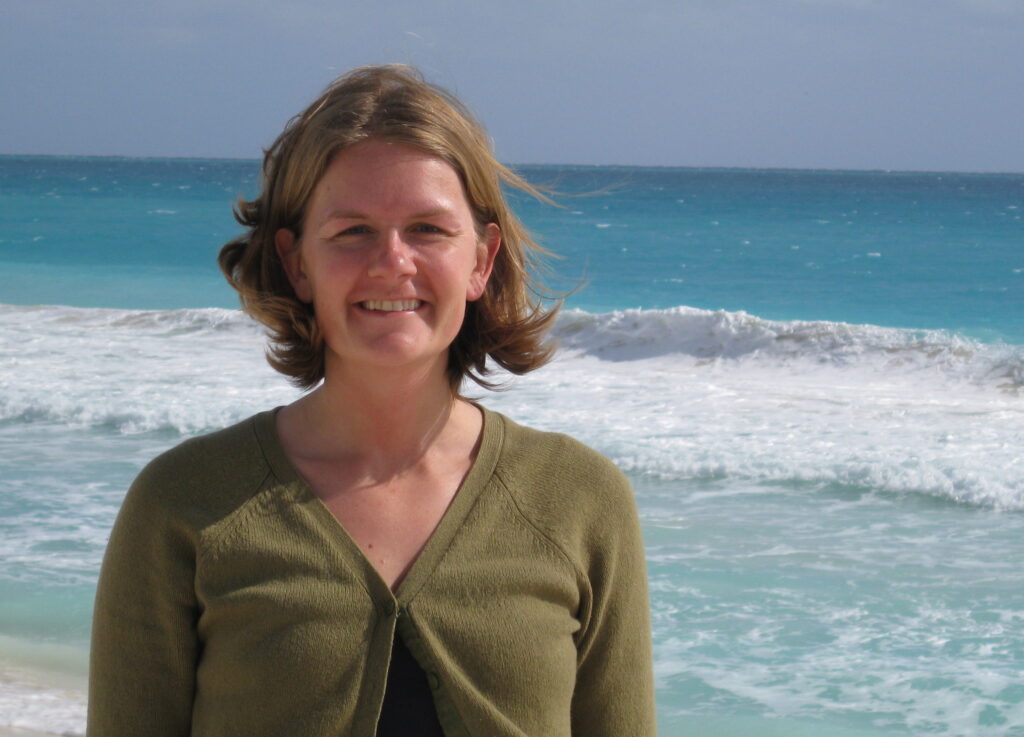Faculty/Student Publications and Presentations
During her year-long research sabbatical, Prof. Frey took advantage of her extra scholarship time to travel to some far-flung places to present her research to a variety of audiences. In September 2022, she presented a poster titled “Interaction of the huntingtin N-terminal sequence with model cell membranes” at the Biomembrane Days Meeting in Berlin, Germany where she had a mini-reunion with the folks from her last research sabbatical at the MPIKG (or for those not keeping track of all the acronyms, Max Planck Institute of Colloids and Interfaces).

In October 2022, Prof. Frey traveled with Prof. Thompson to San Juan, Puerto Rico to SERMACS (Southeastern Regional Meeting of the American Chemical Society) to present the same poster. During her six-month stint in South Korea (more details in the faculty research section, if you are interested), Prof. Frey gave an invited lecture, “Interactions of huntingtin peptide with model cell membranes” as part of the International Workshop for Lipid Technology Innovation hosted by the Translational Nanobioscience Research Center at SKKU (Sungkyunkwan University) in Suwon. Upon her return to Gettysburg, Prof. Frey was invited to give a talk as part of the Gettysburg College BMB (Biochemistry and Molecular Biology) Seminar Series entitled “Proteins & Detergents & Nanoparticles – oh my! Research Sabbatical Adventures in Membrane Biophysics.”
Student/Faculty Research
In Lipid Lab, Prof. Frey was on a year-long research sabbatical allowing her some unfettered time in the lab to continue work on projects revolving around the theme of structure and function of cell membranes with a focus on understanding biophysical interactions of neurodegenerative proteins, detergents, and nanoparticles with cells. During summer and Fall 2022, Prof. Frey worked on her Huntington’s disease project and restarted her collaboration with Prof. Justin Legleiter from WVU (West Virginia University) with experiments focused on the role of divalent cations effect on the aggregation of the htt (huntingtin) protein at mitochondrial membranes. Spoiler alert – physiologically relevant concentrations of Ca2+ cause dramatic increases in htt aggregation and fibril formation on membrane interfaces. On Christmas Day, Prof. Frey and her family traveled to Suwon, South Korea where they settled in to live for six months. Her husband, Phil, continued working as a computer programmer for scientists at NIAID (National Institute of Allergy and Infectious Diseases) and fully enjoyed the array of Korean food while her daughters, Ellie and Matilda, attended the Korea International School and loved trips to Thailand, Japan, and Vietnam. While in Korea, Prof. Frey was a visiting faculty in the TNRC (Translational Nanobioscience Research Center) at SKKU (Sungkyunkwan University) in the lab of Prof. Josh Jackman where she was fortunate to work on several different research projects including finding eco-friendly detergent replacements for TX-100 to be used in bio-manufacturing processes, testing the functional mechanism of anti-cancer peptides, and looking at the interfacial characterization of novel sponge-phase lipid nanoparticles with applications in agriculture and drug delivery. Additionally, she gained experience with several new interfacial techniques, QCM-D (quartz crystal microbalance with dissipation monitoring) which can help analyze the mechanism of surface-interaction phenomena and EIS (electrochemical impedance spectroscopy) to measure induced membrane permeability. All in all, it was an incredibly rejuvenating year filled with science and family adventures.
